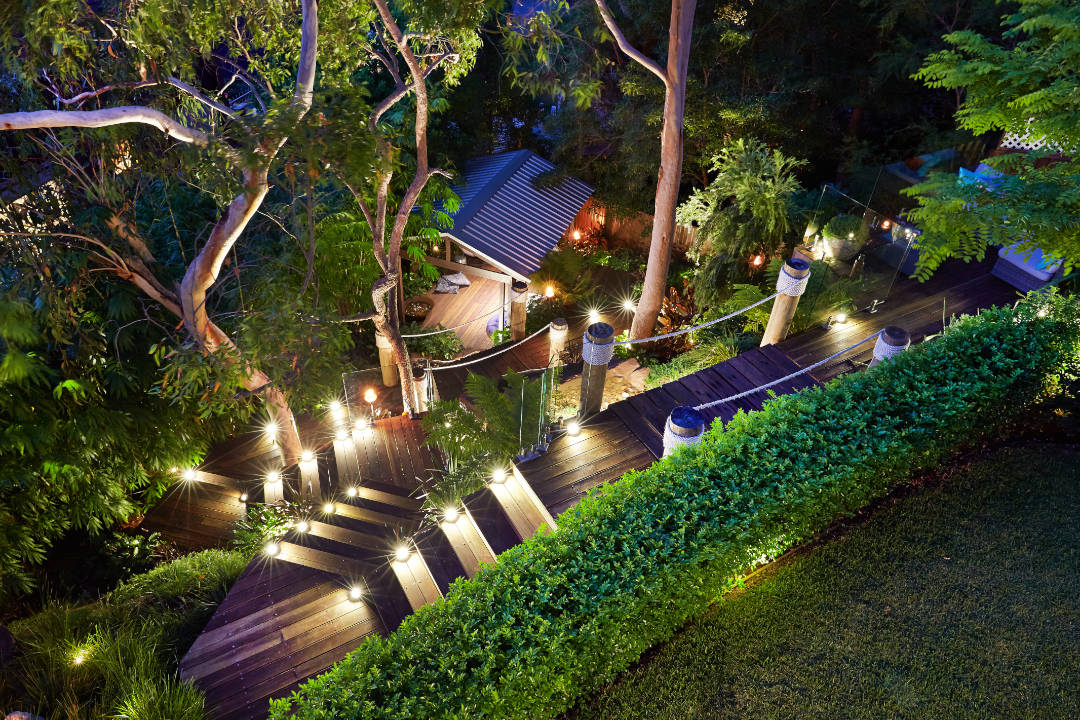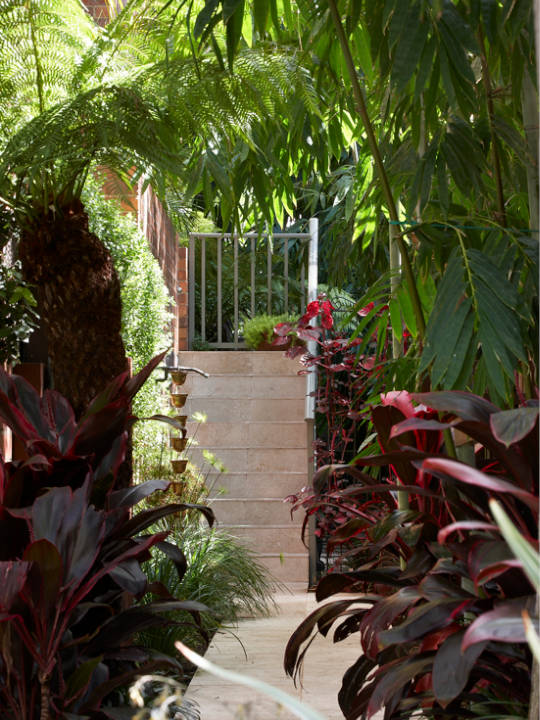Scaling Down:
Beautiful Gardens In
Compact Spaces
For many of us, affording a home with a big, luscious garden is an unachievable dream. However, good things come in small sizes and creating the garden of your dreams in a limited space may not be as impossible as you think. Here, Sydney Pool + Outdoor Design’s Emily Axford sits down with Chris Slaughter, director and lead designer at Scenic Blue Design Pty Ltd, to discuss designing and planting a flourishing little garden and how to add a personal touch to the space.

Since it’s opening in 2005, Scenic Blue Design has designed many stand-out gardens in both large and small spaces. The company specialises in designing challenging sites to a level of detail that enables project to be costed to a fixed price and offers services such as conception design, 3D imagery, drainage and waterproofing plans, lighting plans, irrigation plans and much more. Slaughter and the team also love to work with clients to advise them on what will and won’t work in their garden, ensuring to incorporate as much of the client’s wish list as possible.
SMALL GARDENS, BIG DREAMS
Like any garden, we want to love being in it and not feel overcrowded with an excess of flora. But this can be tricky when it comes to working out how to optimise aesthetic and functionality in a limited space. “The trick with designing small spaces is to visually evaluate the space’s shape and it’s placement in relation to the home and immediate rooms that overlook this space,” Slaughter notes. This way, the garden is visually attractive from inside the home and entices people outdoors, as well as making sure that the garden is designed in such a way that the eye doesn’t get stuck in visible corners, making the garden seem larger than it is.

It goes without saying but in the case of rooftop gardens and balconies, pots for plant life are recommended due to the lack of ground soil. Slaughter advises “making the corners of the space curved with either bespoke planters or grouping together round pots of varying sizes in both height and width.” This creates a visual movement and spatial connection as you cast your eye around the small area. To help create the garden of your dreams, Slaughter recommends engaging a qualified, licenced and experienced landscape architect or designer to generate a scaled concept. Additionally, Slaughter emphasises the importance of ensuring that construction drawings are detailed enough to generate a fixed cost contract or a quote that is broken down so you can see where all the money is going. This will save you money and stress in the future!
SPROUT UP YOUR SPACE
When it comes to small gardens, there are lots to consider when deciding what plants to use such as how much sun or shade you garden has, whether it is east or west facing, whether you want evergreen
or deciduous plants, etc. As Slaughter simply puts, “research is critical.” Thankfully, there are many resources available to conduct this research such as websites or even just walking around your neighbourhood and seeing what your neighbours have planted successfully in their garden. Another way of conducting research is to visit garden centres to see the selection and read plant tags. “Taking your quandary to the nursery person is also a great way of breaking into the world of plants and really get in amongst the possibilities,” Slaughter notes.
When thinking about plants, it’s advisable for you to “be a little brave and introduce plants of varying heights and colours whilst recognising the potential exposure to heavier weather.” This will give you garden character and vibrance. Slaughter recommends using a tree or trees of a known size to elevate you eye up and out of the area to enhance the spaciousness of the area. Planting the correct sized tree in the correct position can also provide much needed privacy from your neighbours’ prying eyes. As aforementioned, pots work best in rooftop gardens or on balconies.
Slaughter recommends using “cascading plants that spill over the edges of the pots” to soften the aesthetic. One trend that has become quite popular are vertical gardens. “They’re relatively easy to install but again, do your homework in both irrigation and plant type,” Slaughter suggests. Vegetable gardens are also a great choice for small gardens or balconies, “not only for the advantages of growing your own crop, which is so rewarding in itself, but also for the little ones as a great education point.”
TINY TOUCHES
Like any space in your home, we have an almost instinctive drive to personalise a space to reflect ourselves and our tastes. A garden is no different. However, in a limited space, less is more as overcrowding the area causes visual cluttering that makes the space seem messy. “Jot down the perfect wish list and then evaluate this against the space and, where necessary, make sacrifices to this list,” Slaughter advises. “All too often I see gardens that have been ‘personalised’, but they are just littered with objects of many different styles and so create a visual clash to the ambience.”
For example, if you incorporated a feature like a buddha statue, it is best to make it a focal point amongst low growing ground cover to soften the base of the statue and incorporating drift lights to catch parts of the feature. Other decorative elements such as water features and lighting are also easy to incorporate in a small space. Slaughter advises to “keep the water feature simple in operation and to the eye” so, like the buddha statue, it balances with the other elements in the garden and doesn’t try for visual supremacy. Additionally, the sound of running water tends to bounce around a small space so smaller water features are ideal unless you want to be “dashing to the loo a fair bit more.”
Lighting is a critical element to the design of a garden and improves functionality. “With a small space, accent lighting is the go as opposed to lighting that illuminates the entire space. Sometimes having areas of the garden with less light actually gives a sense of intrigue and romance to the area,” Slaughter details. Similarly, zoned lighting also enables you to create varying moods, depending on the use of the garden at that time.
Photography courtesy of Scenic Blue Design
